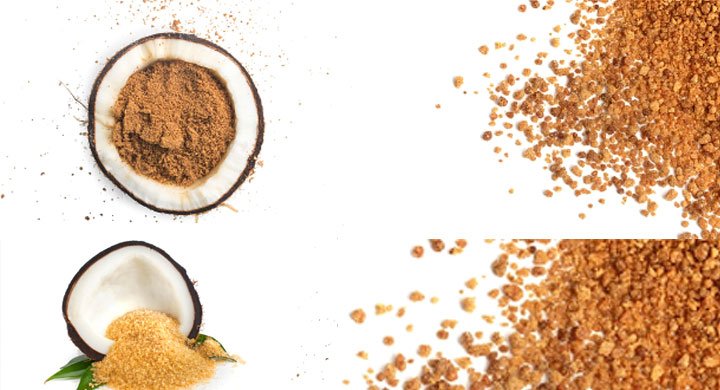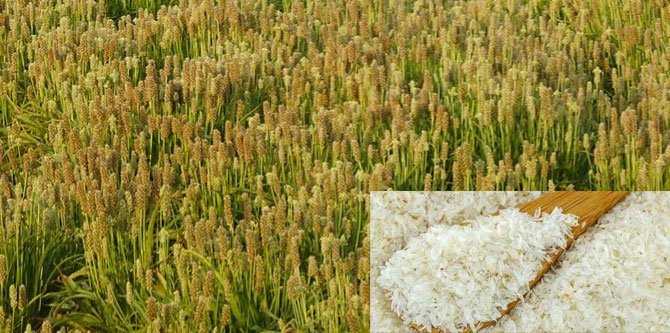Last Updated on August 23, 2021 by Dr Sharon Baisil MD
Tapioca is a starch obtained from the storage roots of the tuber – cassava. This species of the tuber is native to the west and northern regions of Brazil and other parts of South America. The use and inclusion of tapioca are widespread in Asian countries as well. It has been gaining more popularity over time.
Proper and limited use of tapioca provides us with several health-related benefits. However, we need to ensure that it is consumed only in moderate amounts and prepared in the right ways.
15 Health Benefits of Tapioca
- One of its best benefits is that tapioca has a lot of dietary fiber. It has plenty when compared to other regular foods.
- The fiber in the body is good for promoting a complete and effective digestive function. It aids in the proper breakdown and slower absorption of nutrients.
- Tapioca flour is easy to digest than many other flour varieties. It is also good for preventing stomach cramps, irritable bowel syndromes, constipation, indigestion, etc.
- Tapioca is good for weight gain as it has a lot of healthy carbs. These carbs can get accumulated in the body and lead to rising body weight.
- The presence of resistant starch in tapioca feeds the gut bacteria, assisting in better intestinal functioning and strengthening digestive health.
- The several advantages of tapioca on the body’s digestive health are also good for promoting good colon functioning. This is also said to be a source of avoiding the risks of colon cancer.
- Tapioca is a rich source of energy and is often had as an energy-providing food during fasts.
- Having tapioca can contribute to supplying more iron to the body, which may prevent anemia. This is especially beneficial in women.
- Tapioca is also said to boost cognitive development and prevent birth-related disorders in babies.
- Moreover, the consumption of tapioca is said to be good for breastfeeding women as it supplies more starch and fiber, increasing breast milk production.
- As flour, tapioca is better for many as it does not cause allergies as it is gluten-free, grain-free, and nut-free.
- It is low in fats, and the fiber in tapioca also promotes lowering cholesterol levels in the body.
- Having tapioca is also good for treating headaches and is often used as a remedy for curing migraines.
- The presence of vitamin A is good for preventing vision and aging issues in the eyes.
- Tapioca is also used to treat skin issues like dullness, scars, spots, roughness, dehydration, and hair problems like dry scalp, hair fall, and nourishment.
Is tapioca good for health?
Tapioca has both great nutritional value and equally questionable effects on health.
The goodness of tapioca for you depends on how you maintain your body and fulfill its requirements.
If you are looking for a carb-rich diet, then tapioca can serve the needful very efficiently. On the other hand, if you are struggling with high glucose levels, then the improper inclusion of tapioca may harm your health in several ways.
Tapioca is very high in carbs and can provide you with immediate energy that can keep the body energetic and reduce the risks of fatigue. In addition to this, the carbohydrate content of tapioca is also shared by a good amount of dietary fiber, which is a healthy form of carbs.
Fiber is a very important nutrient in the body as it is responsible for the good functioning of the body’s metabolism. A well-functional metabolism helps to keep away digestion and stomach-related issues.
Fiber is also excellent in promoting a complete digestive process efficiently that assists in keeping away problems of constipation and indigestion as well.
__________________________________
⭐ Check out this Flipbook with 30-Day Diabetic Meal Plan based on Foods from Each Indian State ⭐
(click on the ▶ arrow below to scroll the pages and 🔍 button to enlarge)
_____________________________
Apart from this, the fiber found in tapioca can also enhance heart functioning by encouraging better management of cholesterol levels in the body.
Besides fiber, many minerals and vitamins are available in tapioca that can support the heart in many other ways. In addition to this, these vitamins and minerals can also contribute to strengthening the body’s overall immune system. We will have a closer look at the list of nutrients found in tapioca as we move to the next sections.
Tapioca is healthy food if you are looking for an agent that promotes weight gain. It can also balance out the carbs and calories by being good for the body otherwise as well.
One study was done to find out the effect of tapioca on body weight. There were a total of 80 participants and they were divided into two groups. The first group received a half cup of tapioca thrice in a day while the second group received a placebo. When the study was completed, it was found that the group who consumed tapioca had lost an average of 1 kg more than the other group.
A second study also assessed the effect of tapioca on obesity-related blood pressure levels. It was observed that people consuming high-glycemic-index food like sugar, white bread, and rice experienced a greater increase in blood pressure than those who consumed low-glycemic index food like tapioca pudding.
The higher the glycaemic index of a food, the greater its effect on blood pressure levels, especially in obese people. Therefore, tapioca can be used to treat obesity-related high blood pressure effectively if consumed regularly.
There is also an experiment that was done to find out the effect of tapioca on sleep and mood. Consuming tapioca pudding before bedtime can help you get better sleep while increasing your energy levels during the day.
People who were involved in this experiment also reported feeling happier than those who didn’t consume tapioca pudding before going to bed. Another study showed that tapioca contains tryptophan, which is an essential amino acid that contributes to reducing sleep latency and increasing one’s overall sense of well-being.
Tapioca also contains kukoamines that help in boosting the levels of serotonin in our brain for better mood management. In addition to this, it also contains neurotransmitters like GABA, which are responsible for maintaining the overall emotional balance of the body and preventing it from being stressed easily.
Another nutrient found in tapioca is niacin (vitamin B3). This particular vitamin is an excellent contributor to the prevention of hypertension due to its ability to lower the bad LDL cholesterol levels while increasing the good HDL cholesterol levels in the body.
The carotenoids found in tapioca also offer us protection against heart diseases like atherosclerosis by reducing cholesterol and triglyceride levels, thus slowing down plaque formation. This way, it can also keep the hardening of arteries at bay to prevent strokes or coronary conditions from occurring.
However, despite the several good impacts of tapioca, its usage is best when you consult a health expert about it. This ensures that you do not harm your body and risk your health conditions.
Let us find out what the effects of tapioca are on diabetic patients.
Is tapioca good for diabetes?
Well, tapioca is a doubtful item to be included in the diets if you have diabetes. Diabetes is a chronic disorder that manifests in the metabolic system and affects the entire body with time.
Keeping the carbohydrates and calories under control as a diabetic patient is one of the most necessary things to keep in mind. But with the inclusion of tapioca in the diet, you may face health impacts that can negatively trigger your blood sugar levels.
Tapioca can be harmful to your blood sugar levels as they have a lot of starch. This starch breaks down and converts into glucose, which in turn raises your blood sugar levels.
The high glycemic index of tapioca also proves that it is unsafe for patients dealing with blood sugar levels complications. The glycemic index of cassava is 94.
This is a very high number that can make your blood sugars rise to whooping unhealthy levels. The processing of cassava slightly changes the Glycemic index value when it is made into tapioca, but it is still very high to be deemed safe for diabetic patients.
Moreover, the intake of excess carbs is often responsible for causing weight gain. Individuals diagnosed with diabetes or pre-diabetes are required to keep their body weights under controlled margins. Hence, tapioca is one such food item that can hamper the management of weight.
Although the major amount of fiber from tapioca can add good health effects, the higher quantity of sugars and calories nullify these benefits.
Thus, products made using tapioca, such as thickening powders, tapioca flour, tapioca pearls – sabudana, etc., are not recommended for diabetic consumption. Its influence on blood sugar levels can affect the management of diabetes and hamper other functions as well.
Properly processed cassava made into tapioca products can be better for diabetic patients. However, its consumption, if done, must be with proper care and attention.
You can also resort to your doctor’s advice about using tapioca as diabetics. This can help you include this food item in restricted and moderate quantities that would not risk your health.
A study in the journal Diabetes Care examined the effect of tapioca (cassava) on glucose levels in participants with type 2 diabetes mellitus. Researchers found that replacing half of the ‘white’ carbohydrate intake with tapioca does not elevate fasting glucose and improves postprandial glycemia as well.
In another study, researchers examine whether a high Glycemic Index (GI) diet influenced insulin sensitivity for type 2 diabetic patients with impaired glucose tolerance. The study found that there were no significant changes in insulin sensitivity, insulin secretion, morning blood sugar level or hemoglobin HbA1c value between the two groups (high GI vs control). But what they did find is that high GI diet reduced the total cholesterol level and triglyceride levels, an added benefit for people with type 2 diabetes.
What are the health risks of tapioca?
Just like benefits, health risks also come along with the usage of tapioca. So, it is best to be aware of the possible disadvantages before including this food item in your diet. Let us find out what these are:
- The excessive intake of tapioca can lead to several heart problems and cardiac issues. The roots and stems of cassava are rich in phosphorus and calcium. This mineral content can lead to raising your blood pressure levels if you consume them excessively.
- The unhealthy use of tapioca can also trigger kidney and liver problems. Therefore, it is best to include this food item in controlled portions only. However, intakes of cassava chips that are made out of tapioca are not injurious to your health.
- Stomach-related problems can also be caused by excessive usage of tapioca. Cassava is a natural laxative that can cause stomach issues if you include this food item in excess quantities.
- Tapioca or cassava has an impact on the blood cholesterol levels in your body as well. The consumption of tapioca on a regular basis may increase the bad cholesterol levels in your body.
- Therefore, it is best to include this food item in moderate quantities and consult your doctor before using it if you are already under medication for high blood pressure or diabetes.
- Excess amounts of tapioca can harm your blood sugar levels and also hamper your normal body weight.
- Improperly processed tapioca may lead to cyanide poisoning and have toxic effects on the body.
- Over-consumption can also have certain effects on the kidneys and liver functioning.
- Unclean and poorly prepared tapioca may make you vulnerable to developing fungal and bacterial infections.
Do not forget that along with its use, other factors play crucial roles in maintaining your health. Do not forget to maintain a healthy lifestyle by eating a balanced diet and doing regular exercise.
FAQ on the effects of Tapioca on Health
Is tapioca a laxative?

No, Tapioca is not a laxative. Tapioca has a normal physiologic effect on the bowels.
The small particles in tapioca allow it to absorb water and swell in size, thereby thickening chowder and other soups.
If you consume modest amounts of these products (that are usually thickened with cornstarch) every day, then your bowel movements should normally have no more frequency or urgency than if you only consumed foods that were not prepared with this ingredient.
In fact, some studies show tapioca is less likely to cause constipation than other starches because it undergoes enzymatic digestion without being broken down into sugar units known as maltose or maltobiose that often trigger disturbances in bacterial metabolism and digestion.
Is boiled tapioca good for weight loss?

There are many factors that contribute to weight loss, so it’s difficult to provide a definitive answer without knowing more about the context in which you want the information.
That said, boiled tapioca is not a bad source of carbs as far as carbs go. But what most people don’t know is that excess intake of carbs often causes weight gain and contributes to obesity because carbohydrates increase insulin response. This makes your body store energy from food in fat cells instead of burning it off quickly. Tapioca doesn’t contain any protein or fat, but research has shown that those can have benefits for some people who diet or exercise for weight control as well (source). So while tapioca may not be an “excellent” source of carbs, it’s not a bad one either.
Is tapioca good for BP?
Tapioca is often used to help control high blood pressure. It does this for a few reasons- some of which are due to its niacin content. Niacin in tapioca can relax the smooth muscles that cause the constriction of blood vessels and thereby lower your blood pressure.
It also may act by diminishing reactive oxygen species, which induce inflammation through their production of free radicals and oxidative stress. These two mechanisms are consequential to one another, as free radicals play an important role in inducing chronic inflammation, ultimately leading to suffering from diseases such as cancer and heart disease. You don’t want either!
Packed with these benefits, it’s no wonder that many people make careful adjustments here or there in their diet just to make sure they can enjoy this food item regularly.
Does tapioca give you gas?
Tapioca gives you gas because it is digested slower than many other foods.
As a result, more of the fermenting bacteria in your intestines (a good thing) have time to break down the food releasing gas and hydrogen gases as byproducts.
The release of these stool components may give gas-associated diarrhea, which is only temporary and will pass as your gut adjusts to this new type of food. If too much soluble fiber can cause some gas and/or diarrhea, but also works wonders for constipation / digestive health when eaten on a regular basis.
Is tapioca good for PCOS?

Tapioca does, in fact, help PCOS. Ovulation slows when the body is low on glucose and high-glycemic foods spike insulin, so limiting these carbs and adding starch-heavy calories from tapioca will improve ovulatory function.
It was found through studies that 20 women with PCOS had improved metabolic hormone levels and more normal menstrual cycles after consuming a diet with 25% of starch proportional to protein and fat for 10 months, as opposed to women eating a standard high-protein diet. By replacing breakfast cereals or toast with sugar cereal containing 838g of tapioca per kg could also be beneficial for those struggling with irregular periods.
Tapioca works because it contains comparable carbohydrates which are slowly digested, bringing a halt to irregular menstrual periods that women with PCOS often deal with. In addition, the high fiber content in tapioca is also beneficial as it can aid intestinal transit time and shorten absorptive contact time of food, reducing the amount of hormonal activity on intestinal cells.
Is tapioca gluten-free? Is it vegan?
So you can eat this without worry even if you have a sensitive stomach or are on a strict diet. There seems to be no risk of side effects, either, from eating tapioca flour!
Does tapioca interfere with iron absorption?
Tapioca can interfere with iron absorption if you eat it together with iron rich foods.
It’s best to take tapioca at least 2 hours apart from iron-containing foods, as this will reduce the inhibitory effect of phytic acid on your body’s ability to absorb nutrients in both foods.
What is the best way to eat tapioca?

You can cook tapioca in the same way you would rice, or use them as a thickener for soups and gravies.
Tapioca puddings are also popular. However, whatever your plan may be, make sure it is clear of high-glycemic foods like white bread and sugar if you want to optimize the metabolic benefits of tapioca.
To reduce the amount of phytic acid found in tapioca, it is best to consume it with a source of vitamin C. The easiest way to do this would be to add lemon juice to your stir-fry dishes or fruit salads containing apples and bananas. Both are rich sources of pectin, reducing the anti-nutritional effects of phytic acid and maintaining your body’s absorption of vitamins and minerals.
Is there cyanide in tapioca?
Answer: Yes, it is the natural precursor to cyanide and can be removed by soaking followed by boiling. Tapioca can also be made from fermented cassava which does not require this process as a step in preparation for consumption.
Cycasin, a toxic constituent of cassava, appears to have selective toxicity against the liver. It is present in cassava at levels of up to 0.3% on a dry weight basis, and it is the principal storage form of cyanide in this plant, as well as in other related plants such as yams. When processed properly with soaking and/or fermentation removal of the toxin is feasible but undercooked or improperly prepared cassava root can present a risk of acute cyanide intoxication, even if it has been prepared for consumption.
In a study in the Journal of Environmental Science, Tapioca has been found to contain 0.12 percent cyanide which is enough to cause death if ingested at 5-6 grams or more per kilogram of body weight. To reduce this risk, it is recommended that tapioca be cooked on high heat for 15 minutes (or longer) and that the water not be re-used
What is the difference between tapioca, cassava, and manioc?
Tapioca is the starch extracted from cassava root; Cassava or Manioc are names of different types of roots that contain starches that can be made into tapioca by processing, and the actual cassava root (the part you eat) contains cyanide which must be removed to prevent poisoning.
How long do you cook tapioca?
You should cook tapioca for at least 15 minutes, or until soft.
How do you make tapioca pearls?

Tapioca is one of the easiest carbs to make at home, it can even be made on a stovetop. The first thing you need is water and cassava (which can be found in any market that sells Asian vegetables). You will need a pot and either a fork or spoon.
You will want to add enough water to cover the cassava and bring it to a boil for about 20 minutes. Then you should turn down the heat so that it is still bubbling but not so much that it’s boiling over; this prevents unnecessary evaporation of water from the pot while the cassava is cooking.
Then just poke your finger into the mixture and make sure it’s soft enough to be cut in half easily, if not, continue boiling for another few minutes. You then want to scoop out a couple of spoonfuls of tapioca and rinse them under cold water; this will stop the cooking process and prevent the tapioca from getting sticky.
After this, you want to drain out the water and rinse the cassava under cold water for another minute or two; depending on how hard you want your tapioca. The lower amount of time will give a softer texture, while a longer time will give you harder pearls that are more akin to normal rice.
If you want a shiny look, then you can wipe down the tapioca or rinse it under some cold water while they are still warm. Your tapioca is now ready to be eaten as is, or to add to other foods!
What do tapioca pearls taste like?
Tapioca pears have a starchy, yet slightly nutty flavor that’s quite unique to them, and can be used in many different ways. Some people use it to thicken up their stir-fries, while others add it to pies and cakes.
There are many recipes online for tapioca puddings. These puddings have a very custard-like consistency and taste somewhat like vanilla pudding or sago pudding (which is bland). Most people enjoy the concoctions that they create as long as they are made with minimal sugar.
Conclusion
We now know that tapioca is a versatile and delicious foodstuff. In this post, we’ve explored the benefits of eating it as well as some tips for cooking with it. If you want to comment on what you think about these insights or if there are any other topics related to tapioca that interest you, leave us your thoughts below!
















